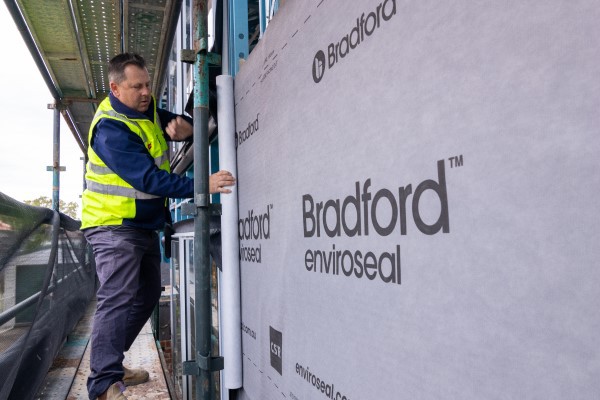Moisture management guide for builders, trades and architects

Insulation is still one of the most reliable ways to ensure our homes are healthy, comfortable, climate-friendly and more energy-efficient, and for professionals like builders and architects, mastering the nuances of moisture control is crucial.
Australians spend nearly 90% of their time indoors, however, many of our homes can be compared to tents in terms of their insulation and comfort, prone to mould, detrimental to health and costly to maintain.
As professionals in the building and construction industry continue to prioritise the health and energy efficiency of structures, it’s essential to stay updated with the latest standards and guidelines. One such pivotal update comes from the National Construction Code (NCC) 2022.
NCC 2022 highlights the use of vapour-permeable membranes in cooler climate zones for moisture management and energy efficiency.
“The NCC2022 revisions represent the industry’s commitment to creating healthier living environments. By expanding the use of vapour permeable membranes to more climate zones, we are reducing the risk of potential moisture-related issues and improving the long-term durability of home design,” Bradford Insulation head of product development insulation Warren Stewart says.
Australia’s distinct climates present varied moisture challenges. High external humidity or high internal moisture can lead to condensation problems that could compromise the building structure and lead to moisture-related issues that have broader implications in areas like durability, health and efficiency if left unattended. Common challenges that can be identified in managing moisture include condensation control, energy efficiency and moisture and structural protection.
Insulation’s significance in moisture management serves as a frontline defence against Australia’s climatic challenges, with wall wraps an essential protective shield against the challenges of moisture, providing moisture defence, breathability and balance and insulation augmentation.
Mastering moisture management is not just about upholding structural integrity, it’s about delivering projects that stand the test of time, both in durability and occupant well-being. For builders and architects aiming for excellence, it’s important to keep in mind the selection of material insulation and wall wraps that align with the climatic challenges. Ensuring a precise installation with well-sealed insulation will also help eliminate potential moisture ingress points.
